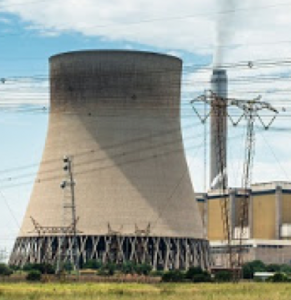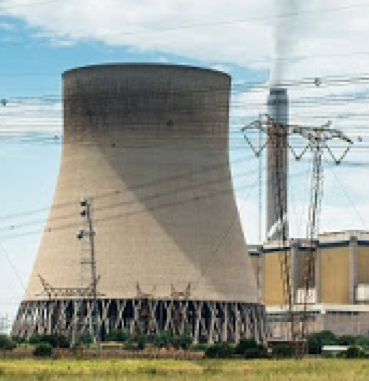
The Business Day reported yesterday that Jabu Mabuza, the chairperson and acting CEO of Eskom, told parliament yesterday that Eskom cannot survive without state support. Well, that was common knowledge unless you happened to be living off the grid at a meditation retreat in the deepest darkest Africa. Ramaphosa appointed a task team in late 2018 to assess the problems at Eskom and devise a turnaround strategy amongst other things. The task team included some heavyweights with tremendous know-how and knowledge (yes, these are different things, know-how and knowledge) including the legendary Sir Mick Davis (who was the Eskom CFO back in the 1980s and early 1990s before he became a mining billionaire). There has been rumors in the press that the task team is suggesting that Eskom move towards renewable energy rather than continue with its obsession with mega coal fired power stations. Finally someone is talking sense. I know because I have a client in the solar PV sector and apparently the cost of solar power per kW is already below that of Eskom’s. Damn, that is bad news for Eskom! Imagine having a competitor that produces power at lower cost in beautiful, sunny South Africa and that’s also much, much, much more environmentally friendly. That’s similar to outdoor billboards trying to compete with online advertising platforms over the next decade.
I am not an expert in the field of electricity generation and distribution. In fact, what I know is dangerous. However, I do know something about finance and numbers. In fact, I am being modest. I know a lot about financial matters and am a published author in the field. Reading about Mabuza talking financial ratios yesterday was enlightening. I was worried that Ramaphosa was going to play the ‘slow game’ again at Eskom. But this cannot happen as the crisis at Eskom needs a clear action plan within the next 6 months and then it’s going to be a long haul to survival. So Mabuza mentions that Eskom’s debt to EBITDA ratio needs to be 5 times or lower in order for the entity to be financially sustainable. For those of you who do not know what EBITDA means, it is the profits of a business/SOE before considering interest income, finance charges, depreciation and amortizations (I may explain this concept in another post). The lower the debt is relative to EBITDA, the more financially stable an entity is. The international credit agencies regard corporates with debt to EBITDA ratios of 5.5 times or more as ‘junk’. I wonder if the Eskom board of directors noticed that in the financial year ended Match 2019 (FY2019), Eskom’s debt to EBITDA ratio was a whopping 15.5 times.
I compiled a case study on Eskom earlier this year and used it in the classroom. I was doing some training within a large corporate to upskill their staff in financial analysis. The delegates, without exception were horrified, at the financial mess Eskom is in. I have attached an Excel model to this post that contains Eskom’s summarized financial history from 2009 to 2019. Read it and weep for our beloved country.
Eskom reported a loss before taxation of R29.1 billion in FY2019. But that was a little naughty on their part. The loss was actually R48 billion if you add back the R15.4 billion of interest expense and R3.4 billion of staff costs that were capitalized to plant & equipment. The Eskom annual financial statements read like a train wreck:
- Revenue of R177.3 billion
- Primary energy costs of R99.5 billion (up from R85.2 billion the previous year)
- Operating costs of R57.8 billion, staff costs (R36.7 billion) being the highest category
- Almost 47,000 employees each earning an average of R785,557 (oh my goodness that is high even if all employees were well skilled, suitable for the job, productive and competent)
- Net interest expense of R42.9 billion
- R438.6 billion of net interest-bearing debt
- Negative cash flow, before raising more debt, of R37.2 billion (Eskom needs to keep borrowing to balance the ‘books’, a bit like most governments)
I am about to sneak into the kitchen and find a cold refreshment as it is past noon and I am getting very scared about the lights going out. So how is Eskom going to trade out of its current predicament? Thats the billion dollar question! In the corporate world, there are simplistically three ways to improve profitability.
- Increase revenue (In Eskom’s case, I estimate that they would need to increase revenue from R173.1 billion to over R280 billion just to breakeven)
- Improve ‘gross profit margins’ being revenue less primary energy costs (The margin would have to increase from 45% to 70% within the next year to avoid incurring a loss)
- Reduce operating costs (Costs would need to decrease from R57.8 billion to R12.8 billion)
- Or a combination of the above initiatives
I am not sure if you still believe in the tooth fairy. Even if you do, you would be hard pressed to conceive of any scenario whereby Eskom could in the next year, or three or ten, return to profitability and generate positive cash flow. It is not going to happen based on the existing strategy. I would be most interested to read what Ramaphosa’ experts think.


Recent Comments